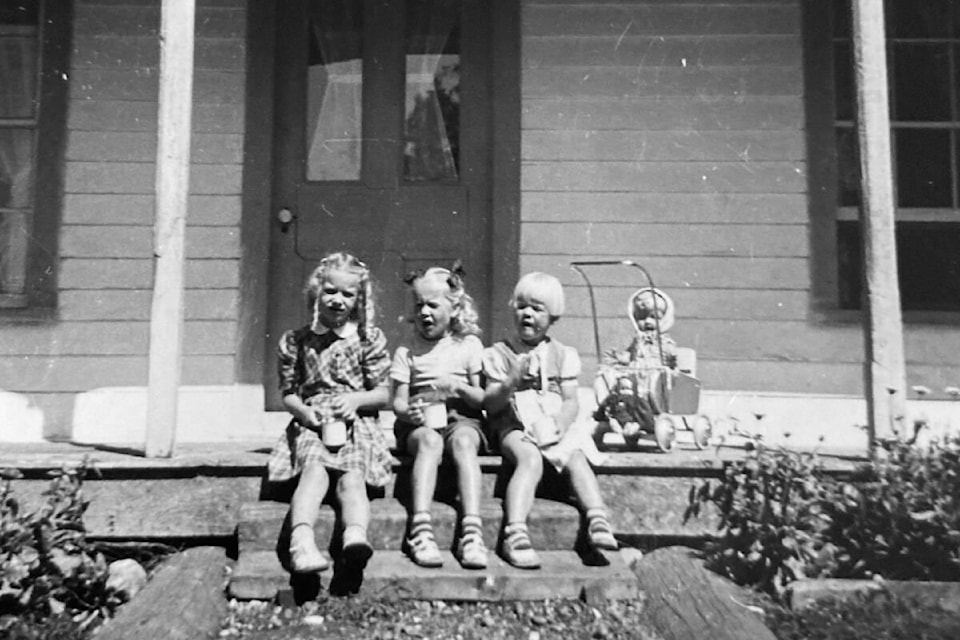Elida Peers | Contributed
With renewed calls for vaccinations, it’s a good time to remember Dr. Jonas Salk’s 1953 discovery of a vaccine for polio.
It is disconcerting to learn that poliomyelitis is experiencing a comeback worldwide, and it is good to hear of fund drives to help eradicate this dreadful infectious disease.
The Royal Jubilee’s isolation ward treated 82 patients, including some from Sooke, during the worst polio epidemic in Victoria’s history in 1953.
Four Sooke boys contracted polio that year, all seriously afflicted. David McClimon and Danny Lajeunesse are probably the best-known among them.
Today’s photo features a three-year-old Lydia Van Ek, at right, as she sat with her cousin Janni Slots and her sister Anke Van Ek on the front porch of Moss Cottage.
The Van Ek family arrived from the Netherlands in 1952, sponsored by Philip Wilford, and were staying at Moss Cottage briefly before moving over to the big house at Woodside Farm. Perhaps the best known of the Van Ek family’s 10 children was the eldest son, Gerrit (Gerry), who played a significant role in Sooke community life.
Lydia was diagnosed with polio 10 days before her fourth birthday in 1953. Her left leg was severely affected by polio when she was taken to Royal Jubilee Hospital.
A short time later, she was transported to Mill Bay’s Queen Alexandria Solarium. Lydia remembers a police escort assisting with the transport. Her parents, new to Canada without good language skills, visited her at the Jubilee and were told she was gone.
Terrified, they thought she died, and it was with much relief that they learned she was at the solarium.
The Van Eks were allowed to visit her every fortnight, and Lydia remembers her distress at their visits as it meant they would soon leave again.
A bright spot during Lydia’s stay was the visit of Queen Elizabeth, who chatted with the children. Three years passed before Lydia was able to return home with a leg brace and attend a regular school.
Today, this courageous woman uses a power wheelchair to get about and commutes to a part-time job she loves as a unit clerk at Gorge Road Health Centre.
Adele Lewis (Stevens), another well known Sooke girl, fell ill when she was five and was unable to walk for a year.
She remembers falling when she looked longingly at the stairs to get outside. While she has been affected, she has generally been able to lead a busy life after recovering enough to start school after a year.
A dozen years earlier, Ray Vowles’ younger sister and brother died of the disease.
Discovery of the polio vaccine was indeed a milestone.
•••
Elida Peers is the historian of the Sooke Region Museum. Email historian@sookeregionmuseum.com.
